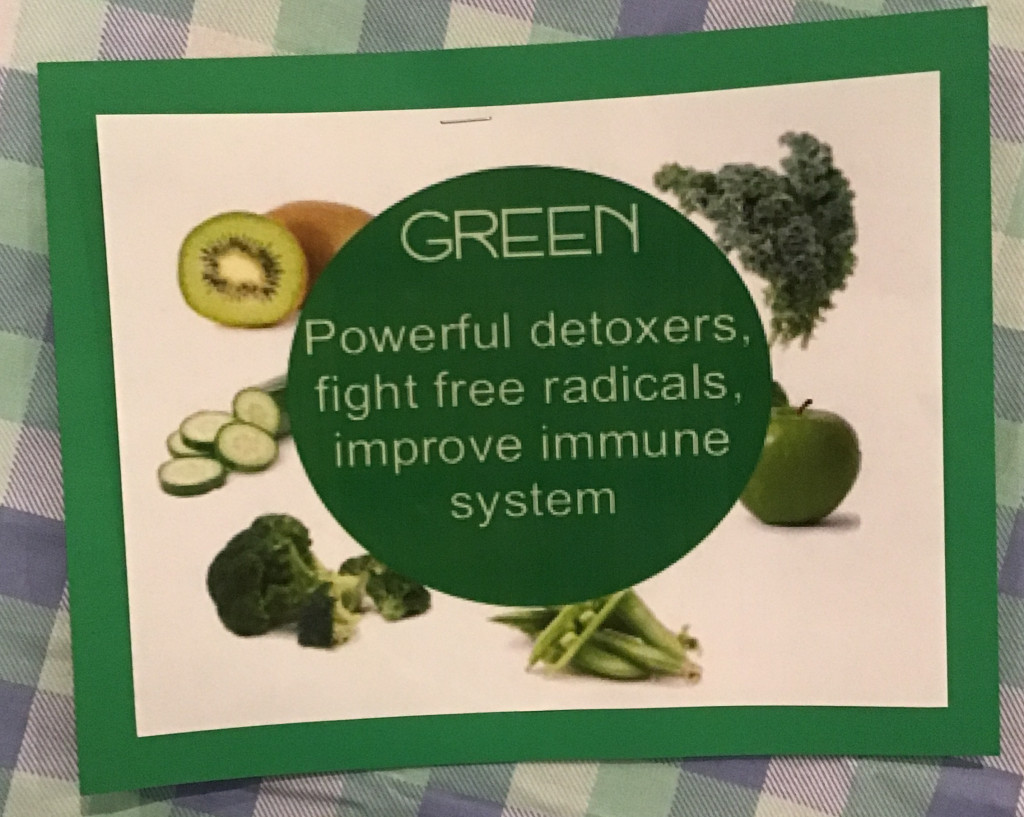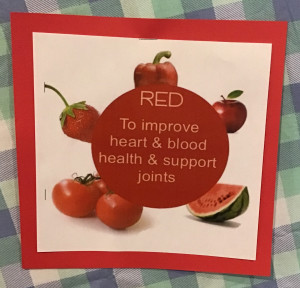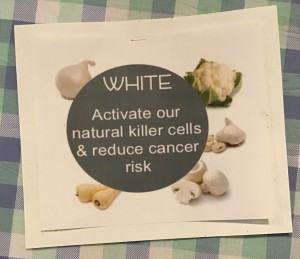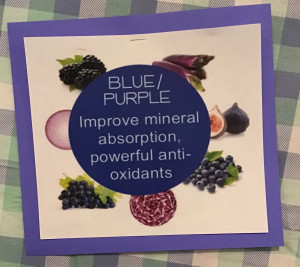While variety is the spice of life, eating an assortment of colorful fruits and vegetables daily may help you live a healthier and longer life. There are so many benefits to eating a variety of colors. Eating each color in the rainbow provides essential vitamins, minerals, fiber, and phytonutrients our bodies need to maintain optimal health.
All your meals should have a rainbow of foods! Here’s a look at the different colors of foods and some of the health benefits of each type:
White Foods
While not vividly hued, white fruits and vegetables like cauliflower, garlic, onions, white potatoes, and pears are loaded with nutrients. They are rich in vitamin C, potassium, folate, and dietary fiber. And within garlic and onion, there’s a substance called allicin, which has antibacterial and antiviral properties.
Blue/Purple Foods
Blue and purple fruits and vegetables, such as blackberries, purple grapes, and purple potatoes, are packed with nutrients essential for human health. Anthocyanins, the phytonutrients responsible for the blue/purple color, are powerful antioxidants that can help protect cells from damage caused by inflammation and free radicals.
G reen Foods
reen Foods
Verdant fruits and veggies, such as broccoli, kale, snap peas, green apple, and cucumbers, have incredible detoxifying properties. Green fruits and veggies are rich in vitamins A, C, and E, which help promote immune system health, and minerals such as iron, magnesium, calcium, potassium, phosphorus, and zinc. Broccoli and kale also contain sulforaphane, a powerful phytochemical that may protect the body against cancer.
Yellow Foods
Yellow fruits and vegetables are a powerhouse of essential nutrients, containing vitamin C, beta-carotene, potassium, folic acid, and dietary fiber. Bananas, one of the most popular yellow fruits, are a terrific source of potassium and pineapples contain bromelain, a group of enzymes that helps the immune system. Did you know that yellow peppers are loaded with vitamin C even more than what’s in an orange?

Orange Foods
Carrots, oranges, cantaloupe, and pumpkins are great sources of essential nutrients, vitamins, and minerals. They are packed with vitamin C, which helps promote healthy immune systems, and potassium, which regulates blood pressure levels. Additionally, oranges contain folate and vitamin A, which aid vision health; magnesium for energy production; and fiber for better digestion.
Red Foods
Crimson-colored strawberries, red apples, red peppers, watermelon, and tomatoes are loaded with body-boosting nutrients, including vitamin A, vitamin C, folate, potassium, lycopene, anthocyanins, and other polyphenols. Tomatoes are a significant source of lycopene, which is important for prostate, heart, and blood health, and even supporting the joints.

Fresh? Steamed?
It’s a good idea to look at which foods you’re eating regularly, which ones you can rotate in and out of your diet, and how you’re preparing them. Some vegetables, such as broccoli, are better if you steam them because it preserves the essential vitamins and minerals better than other cooking methods.
On the other hand, berries are best when they’re eaten fresh. If you heat to produce that contains vitamin C, that will denature that C, so there won’t be as much of it activated.
Give Your Nutrition a Boost
If you’d like to optimize your nutrition, schedule an appointment with naturopath Donna Roerick!


